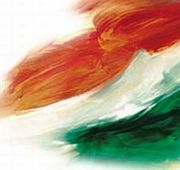 | « Back to article | Print this article |
 If you have ever wondered why foreign universities are striking most of their alliances with institutions in the southern and western regions rather than north India, a new CII-KPMG study may shed some light on the subject.
If you have ever wondered why foreign universities are striking most of their alliances with institutions in the southern and western regions rather than north India, a new CII-KPMG study may shed some light on the subject.
For one, the Educational Development Index for most of the North Indian states is low as compared to the other parts of the country.
While Bihar with an EDI of 0.4 remains last in the country, the ranks of other North Indian states, with the exception of Delhi and Chandigarh, are not encouraging either.
A low EDI has a direct correlation with low-skilled employment. Manifestation of the low index is also evident in the low enrolment and high dropout profiles of students in northern states.
The Northern region also lags the western and southern regions of the country significantly in education and skill development.
With an overall literacy rate of 60 per cent as against 69 per cent and 71 per cent in the South and the West, it is clear that the education and skill infrastructure in the Northern region needs to address certain critical issues - both on the supply side and the demand side.
Government expenditure on education, too, is declining in North Indian states as compared to southern states like Kerala and Tamil Nadu.
The study notes that over the five-year period 2001-06, Punjab has spent less of its gross domestic product (2.40 per cent in FY 05) on education compared to the India average (3.8 per cent in 05).
Moreover, there are fewer engineering and technical institutes in the northern region. Although the number of engineering institutions in India is more than 1,500, the region-wise distribution of institutions and sanctioned intake of students shows significant regional disparity.
Around 50 per cent of the engineering institutions are in the southern region (including South-west), while the northern region has only 20 per cent.
A similar trend is seen for medical institutions. A large number of medical colleges are concentrated in six states (Maharashtra, Karnataka, Andhra Pradesh, Tamil Nadu, Kerala and Gujarat.
These states account for about 63 per cent of the total number of medical colleges and 67 per cent of the number of seats.
Medical education, notes the study, is a crucial knowledge infrastructure necessary to ensure human development, health services and welfare of the citizen population.
North India has to enhance its medical education infrastructure to match that of the Western and Southern states.
Penetration of public Industrial Training Institutes and privately-owned Industrial Training Centers -- which impart vocational training -- too appears to be low in North India as compared to South.
Maharashtra and Southern states like Tamil Nadu, Karnataka, and Andhra Pradesh focus on vocational training at school levels itself unlike northern states of Punjab, Bihar and Haryana where vocational education penetration is very low at the school level.
The number of teachers in most of the Northern states, too, is not adequate to meet the needs of the bourgeoning student population in the states.
The pupil-teacher ratio in states like Uttar Pradesh (54) and Delhi (52) is very high compared to the Southern states of Kerala (18), Karnataka (16) and Tamil Nadu (21). Teachers' enrollment in the training programmes in the Northern region, too, is very low compared to Southern and western parts.
Moreover, preference for science and math education is declining in North India which can hamber demands in field of IT, telecom, pharma, engineering and R&D.
English, too, is not enforced as a medium of instruction from the primary level. To add to the woes, there's a urban-rural disparity in the northern region itself.
And lower female literacy in North India further multiplies the issue of low access to education in north India.
Listing the positives, the study notes that some steps have been taken in this direction.
The Chandigarh Administration, for instance, is setting up a multi-institutional Education City at Sarangpur, for which 16 sites, measuring 6 acres each on long lease have been set aside. And the once agrarian state of Haryana is also transforming itself into an education hub.
Quick Comparison
North India (NI) would also enjoy a growing working-age population at a time when other parts of the country -- especially the south - would have more old people beyond the working-age segment. Around 33.4 million students from North India are expected to enter the higher and vocational education space by 2016.
This, however, also implies that even if the government increases its outlay on education four times the current outlay, it would not be adequate to meet this enrollment demand of 33.4 million students.
The CII-KPMG study expects a capex of around $84 billion to fill in the demand-supply gap in North India.
Hence, it recommends that North India should provide incentives to boost public private participation in the education sector.
It adds that the government should create 'Special Education Zones' and also encourage online degree programmes and distance learning courses.